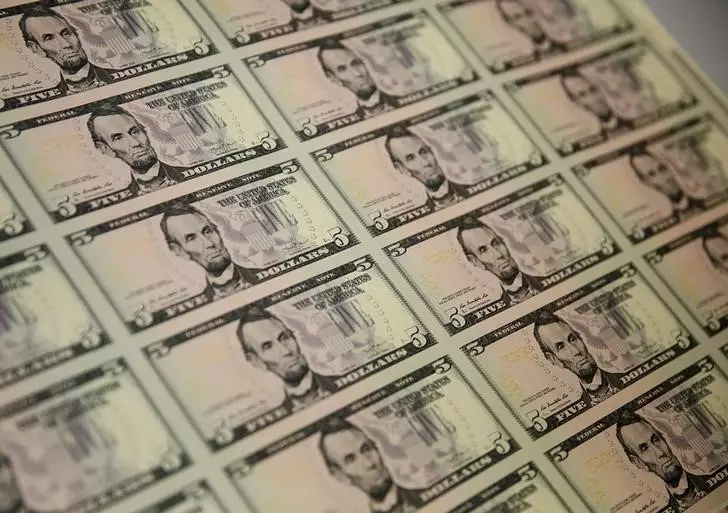In recent days, the U.S. dollar has exhibited a notable degree of volatility, reflecting the dynamic circumstances surrounding U.S. monetary policy. Following a robust rebound, the Dollar Index, which measures the value of the dollar against a selection of six foreign currencies, dipped slightly, indicating a momentary consolidation phase. At a recent exchange of 100.565, the dollar had just experienced a remarkable 0.6% surge, marking one of its most significant gains in recent months—particularly since June 7. This fluctuation is a clear indicator of traders’ ongoing reassessment of future Federal Reserve rate decisions.
The catalyst for this rebound was the Federal Reserve’s recent shift to an easing cycle, characterized by a substantial 50 basis-point cut in interest rates. This drastic action illustrates the Fed’s response to evolving economic conditions, prompting market participants to grapple with the implications of such a policy shift. As investors digest this change, there is heightened anticipation surrounding upcoming speeches from influential Fed members, aiming to provide further insight into the central bank’s future direction.
The discourse surrounding monetary policy among Federal Reserve officials has become noticeably inconsistent, fueling uncertainty in the market. For instance, Fed Governor Adriana Kugler expressed robust support for the recent rate cut. In contrast, Governor Michelle Bowman underscored caution against steep reductions, while Atlanta Fed President Raphael Bostic advised a more measured approach to rate adjustments, declaring that the Fed need not rush its easing maneuvers.
This variety of perspectives highlights the complexity within the Federal Reserve as it seeks to navigate a landscape characterized by fluctuating inflation rates and shifting economic indicators. As Powell prepares to deliver pre-recorded remarks alongside other Fed officials, market analysts are keenly observing these discussions, expecting clarity regarding each official’s stance and their respective Dot Plot submissions—essentially outlining anticipated future interest rate changes.
Concurrently, the economic data slate appears considerably packed. Economic indicators such as the latest GDP figures for the second quarter, weekly jobless claims, and the release of data on durable goods orders have the potential to significantly influence market expectations. Such economic reports are crucial, as they allow traders to gauge the practical implications of monetary policy adjustments and give further context to recent Federal Reserve decisions.
Furthermore, in Europe, currency pairs involving the euro have exhibited their own set of fluctuations. The euro experienced a slight uptick against the dollar, climbing to 1.1132 after a pullback from a high not witnessed since July of the previous year. Analysts suggest that unless there is a clearer directional signal from U.S. data, we may continue to see the EUR/USD trading within a confined range of approximately 1.110-1.120. This relative stability indicates traders’ hesitance to make significant moves without conclusive evidence of a transformative economic landscape.
The implications of the dollar’s maneuvers extend to other global currencies as well. For the British pound, the USD/GBP pairing saw minor gains, with the British pound trading at 1.3342 after a brief surge to levels not seen since early 2022. Conversely, the Swiss franc experienced a decline as the Swiss National Bank opted for a 25 basis-point cut in its benchmark interest rate—marking the third consecutive rate reduction. Though expected, this move remains significant in the context of comparative inflation rates across economies.
Moreover, USD/CNY saw a minor decline as responses to Beijing’s stimulus measures unfold. These efforts signify China’s commitment to bolstering its economic growth amid global pressures. As for the Japanese yen, anticipated political shifts ahead of the upcoming LDP elections could stall the Bank of Japan’s monetary tightening plans, prompting traders to recalibrate expectations in the USD/JPY pair.
Overall, the U.S. dollar’s recent activity epitomizes a broader narrative of complexity and volatility in the global currency market. With upcoming Fed discussions and economic data releases set to shape future trajectories, traders and analysts alike will remain vigilant. The interplay of domestic monetary policy decisions, global economic data, and political events across key economies will ultimately dictate the dollar’s standing and its interactions with other currencies in the coming weeks. Understanding this intricate landscape is crucial for making informed investment decisions in an ever-evolving economic setting.

